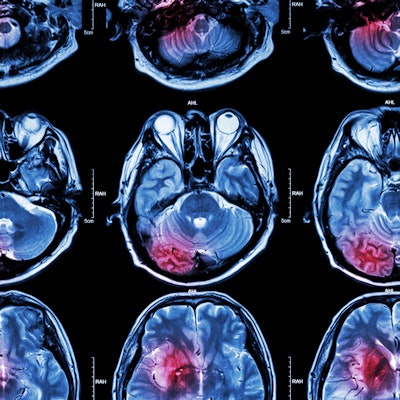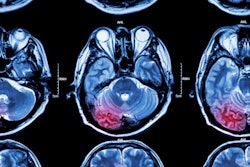
Artificial intelligence (AI) algorithms can determine from multiparametric MRI exams if a stroke patient's symptoms began within 4.5 hours -- the recommended window of time for a patient to be treated with thrombolysis, according to research published online January 28 in Stroke.
A team of researchers from South Korea trained three machine-learning algorithms and found that all three had higher sensitivity and comparable specificity to human readers for determining if stroke onset had occurred within 4.5 hours of the MRI. As a result, these algorithms could potentially enable some patients to receive thrombolysis who otherwise wouldn't be eligible for the treatment due to an uncertain onset of stroke symptoms.
"[Machine-learning] algorithms using multiple magnetic resonance imaging features were feasible [and] even more sensitive than human readings in identifying patients with stroke within the time window for acute thrombolysis," wrote the authors, led by Hyunna Lee, PhD, and Dr. Eun-Jae Lee of the University of Ulsan College of Medicine in Seoul.
Excluded patients
Intravenous thrombolysis is recommended up to within 4.5 hours of symptom onset in stroke patients, but approximately 25% of patients don't know when their strokes began and are therefore excluded from that treatment. Multiparametric MRI may be useful as diffusion-weighted imaging (DWI) detects reduced apparent diffusion coefficient (ADC) of ischemic lesions within minutes of stroke, while fluid-attenuated inversion recovery (FLAIR) shows a net increase in water content within one to four hours, according to the researchers.
"Thus, a mismatch of signals on DWI and FLAIR may be used as tissue clock," they wrote.
However, a DWI-FLAIR mismatch doesn't necessarily mean that the patient has actually had a stroke within 4.5 hours, according to the authors. What's more, human readings of DWI-FLAIR signals have been characterized by low-to-moderate intra- and interreader reliability.
Believing that machine learning could help to determine the timing of acute stroke, the researchers utilized three different types of machine-learning models: logistic regression, support vector machine, and random forest. A total of 89 imaging features were acquired from automatic image processing techniques and used to train the models.
Algorithm training, testing
Training and testing were conducted from a dataset of 355 acute ischemic stroke patients at Asan Medical Center who had received an MRI scan within 24 hours of symptom detection. The researchers then divided the individuals into eight subgroups of patients based on symptom onset times. In each subgroup, 85% of patients were used for training and 15% were set aside for testing.
After the algorithms were trained and tested, the researchers compared the results on the test set with the human readings of DWI-FLAIR signal mismatch.
| AI performance for identifying stroke within 4.5 hours of symptom onset | ||||
| Human reading (based on DWI-FLAIR signal mismatch) | Machine-learning algorithm (support vector machine) | Machine-learning algorithm (logistic regression) | Machine-learning algorithm (random forest) | |
| Sensitivity | 48.5% | 72.7% | 75.8% | 75.8% |
| Specificity | 91.3% | 82.6% | 82.6% | 82.6% |
| Positive predictive value | 88.9% | 85.7% | 86.2% | 86.2% |
| Negative predictive value | 55.3% | 67.9% | 70.4% | 70.4% |
The differences in sensitivity between the human readings and all three machine-learning algorithms were statistically significant. The machine-learning algorithms had lower sensitivity than the human readers but not at a statistically significant level. Also, any differences between the machine-learning algorithms were not statistically significant.
"[Machine-learning] techniques may be feasible and useful in identifying candidates for therapy among patients with unclear stroke onset time," the authors wrote. "Further research is required to evaluate the applicability of these [machine-learning] algorithms to other patient populations."



.fFmgij6Hin.png?auto=compress%2Cformat&fit=crop&h=100&q=70&w=100)





.fFmgij6Hin.png?auto=compress%2Cformat&fit=crop&h=167&q=70&w=250)











